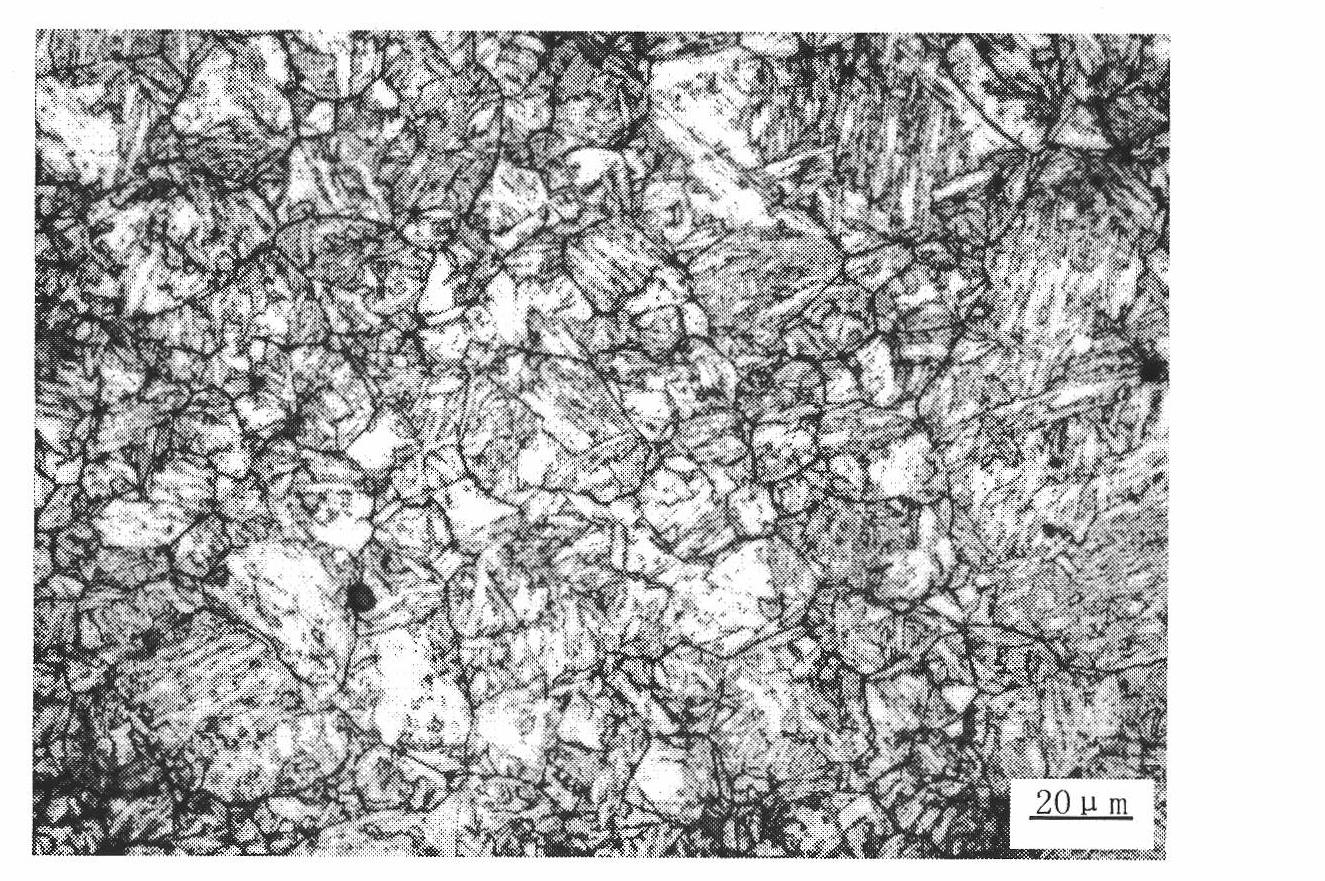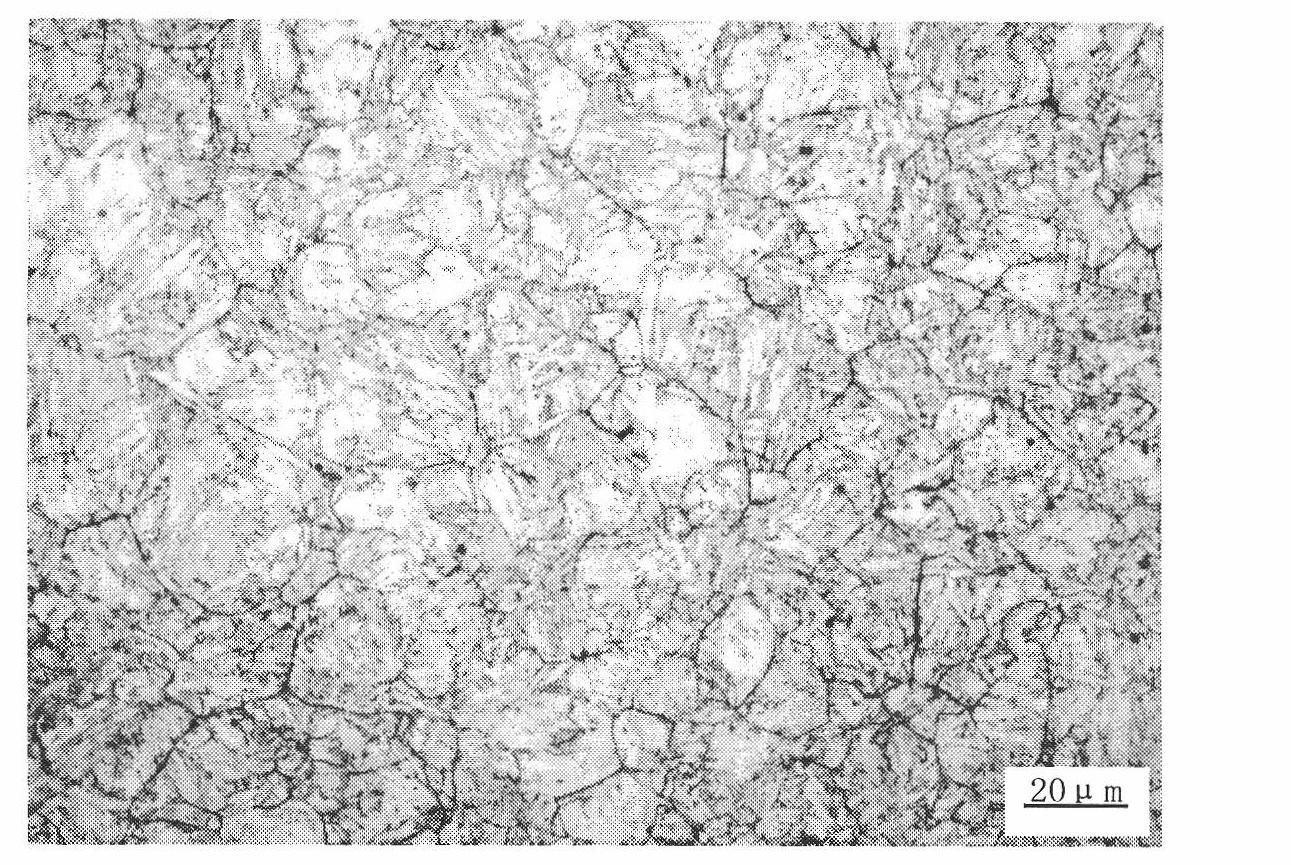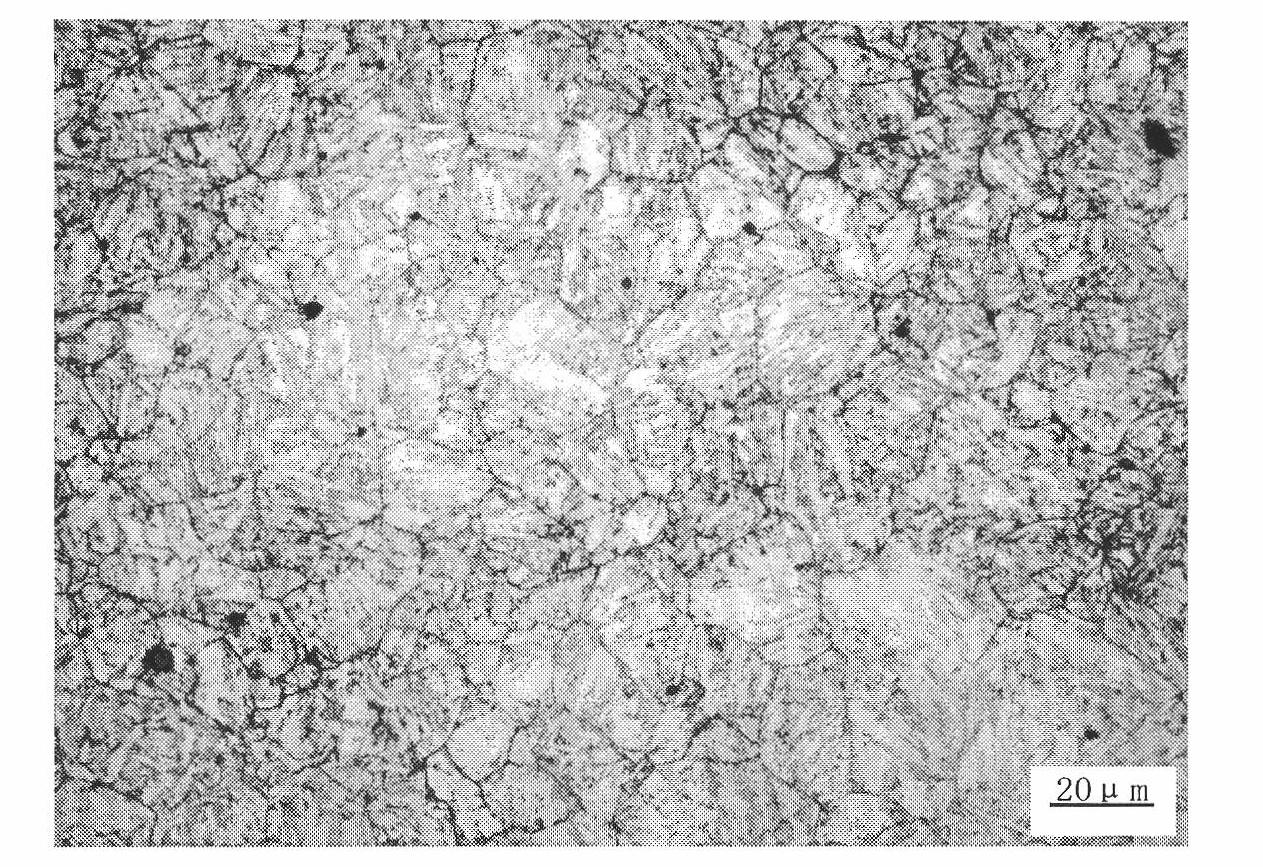Displaying method for austenite grain boundary of intermediate-carbon alloy rare earth steel
An austenite grain boundary and carbon alloy technology, applied in the field of physical inspection, can solve the problems of long erosion time, unknown display effect of medium carbon alloy steel, low efficiency, etc., to avoid environmental pollution, ensure product performance, and be reasonable The effect of controlling process parameters
- Summary
- Abstract
- Description
- Claims
- Application Information
AI Technical Summary
Problems solved by technology
Method used
Image
Examples
Embodiment 1
[0019] The chemical composition of the sample is by weight percentage: C: 0.27%, Si: 0.190%, Mn: 0.565%, P: 0.0098%, S: 0.010%, Cr: 1.13%, Mo: 0.228%, V: 0.056%, B: 0.0027, Re: 0.002% belong to medium carbon alloy steel;
[0020] The specific erosion method is:
[0021] (1), sample preparation: after quenching, the iron oxide scale on the surface of the sample with a size of 20 mm × 15 mm × 15 mm was ground off, and then finely ground on metallographic sandpaper with a grain size of 240, 400, 600, 800, and 1000, Grinding and polishing on a polishing machine should ensure that the polished surface of the sample is free from any scratches, pits, pits, stains and other defects.
[0022] (2) Proportion of corrosive reagents and erosion method: Put 2 g of picric acid and 20 ml of detergent into a φ60 mm×70 mm petri dish containing 20 ml of distilled water, stir with a glass rod to allow the reagents to fully react; after stirring, put the absorbent cotton Put it into the bottom o...
Embodiment 2
[0024] The chemical composition of the sample is by weight percentage: C: 0.274%, Si: 0.201%, Mn: 0.561%, P: 0.0084%, S: 0.009%, Cr: 1.14%, Mo: 0.230%, V: 0.058%, B: 0.0026, Re: 0.004% belong to medium carbon alloy steel;
[0025] The specific erosion method is:
[0026] (1), sample preparation: prepare sample according to the method for preparing sample in embodiment 1,
[0027] (2) Proportion of corrosive reagents and erosion method: Put 2 g of picric acid and 20 ml of detergent into a φ60 mm×70 mm petri dish containing 20 ml of distilled water, stir with a glass rod to allow the reagents to fully react; after stirring, put the absorbent cotton Put it into the bottom of the petri dish; at this time, put the polished sample into the petri dish with the polished side down, take out the sample after eroding for 5 minutes, put it in a large amount of alcohol to wash the sample, and immediately wipe the surface mucous membrane with absorbent cotton , and finally washed and drie...
Embodiment 3
[0029] The chemical composition of the sample is by weight percentage: C: 0.273%, Si: 0196%, Mn: 0.559%, P: 0.0086%, S: 0.009%, Cr: 1.18%, Mo: 0.229%, V: 0.057%, B: 0.0025, Re: 0.006% belong to medium carbon alloy steel;
[0030] The method for preparing the sample The preparation of the sample and the erosion method are the same as in Example 1. Put 2 g of picric acid and 20 ml of detergent into a φ60 mm×70 mm petri dish filled with 20 ml of distilled water, and stir with a glass rod to allow the reagents to fully react; After stirring, put the absorbent cotton into the bottom of the petri dish; at this time, put the polished sample into the petri dish with the polished side facing down, take out the sample after eroding for 5 minutes, put it in a large amount of alcohol to wash the sample, and wash the sample with absorbent cotton Immediately wipe its surface mucous membrane, rinse and dry with alcohol at last, and observe under a metallographic microscope at 200 times magni...
PUM
 Login to View More
Login to View More Abstract
Description
Claims
Application Information
 Login to View More
Login to View More - R&D
- Intellectual Property
- Life Sciences
- Materials
- Tech Scout
- Unparalleled Data Quality
- Higher Quality Content
- 60% Fewer Hallucinations
Browse by: Latest US Patents, China's latest patents, Technical Efficacy Thesaurus, Application Domain, Technology Topic, Popular Technical Reports.
© 2025 PatSnap. All rights reserved.Legal|Privacy policy|Modern Slavery Act Transparency Statement|Sitemap|About US| Contact US: help@patsnap.com



